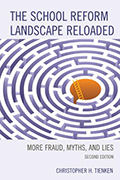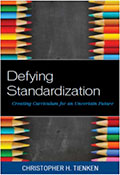Findings from AASA’s “The American Superintendent: 2020 Decennial Study” suggest that superintendents are more often the ones leading discussions about educational equity in their school communities.
But educational equity also was found to be one of tasks that superintendents engaged in the least. Only 7 percent of respondents in the national study indicated equity was an issue on which they spent a considerable amount of time. Personnel management, conflict management and relationships with the board of education were the top three issues that most frequently consumed superintendents’ time.
Redlining in Education with Standardized Tests
Redlining is a euphemism originally used to describe discriminatory practices carried out by mortgage lenders and real estate agents to deny people of color housing located in certain neighborhoods.
The term expresses the practice of drawing actual red lines around particular neighborhoods to denote areas where people of color would be denied loans, according to reports by the U.S. Federal Reserve. Redlining was just one method used to racially segregate neighborhoods within cities and cordon off the northern suburbs.
Educators who use standardized test results as the deciding factor for student entrance into academic programs can unknowingly replicate the racial and socioeconomic segregation seen in American society and exacerbate educational inequity in schools. Although ample evidence suggests the use of standardized testing as the determining factor for academic placement of students leads to academic red-lining and segregation along the lines of racial and socioeconomic status, the practice continues widely.
The negative impact on education equity caused by using standardized test scores to determine academic course placements or admittance into selective magnet programs can be seen in some schools simply by walking the halls and looking at the demographic makeup of advanced academic classes and self-contained special education classes. The impact becomes apparent during a deeper dive into the socioeconomic status of students in those course tracks.
Read the full article HERE


